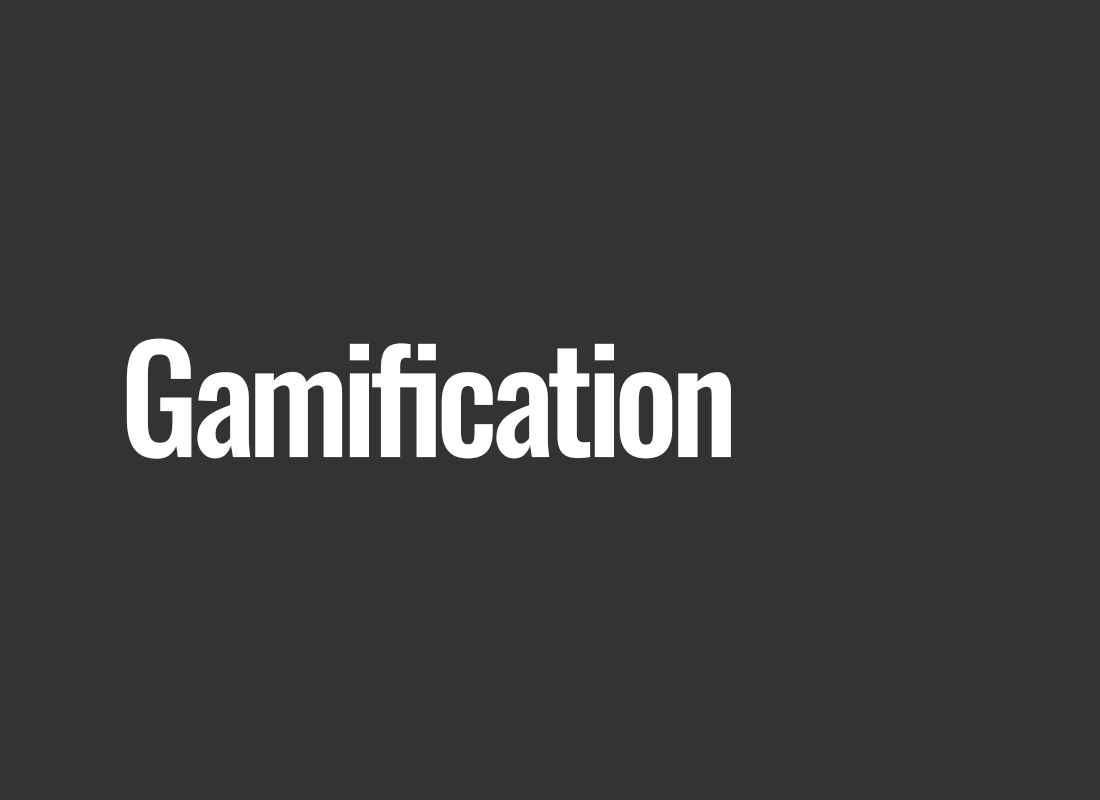Gamification
Gamification, although it may sound like a modern term, has its roots in ancient traditions that combine play with everyday activities. In its simplest form, gamification is the process of implementing elements and mechanics of games into activities and environments not directly related to gaming. The goal is to increase engagement, motivation, and improve the user experience by introducing entertaining and competitive aspects.
Gamification exploits the natural human tendency to compete, achieve goals, earn rewards, and gain social recognition. Introducing game elements such as points, badges, leaderboards, challenges, and rewards stimulates participants to actively and engagedly participate. This is particularly effective in environments where traditional methods of motivation may be insufficient or ineffective.
In gamification, it is key to understand that it's not about creating games in the traditional sense. Rather, it's about applying game mechanics in a context that is not inherently entertaining. This can include a variety of fields, from education, through business, marketing, health, to technology and innovation.
For example, in the workplace, gamification can be used to increase employee productivity by introducing reward systems for achieving business goals. In education, game elements can help students better assimilate knowledge through interactive challenges and reward systems. In marketing, gamification can increase customer engagement and brand loyalty through contests and loyalty programs.
However, gamification is not just about rewards and points. It's also about building experiences that are engaging, motivating, and satisfying. Properly designed gamification strategies can lead to deeper engagement, better information assimilation, increased loyalty, and improved overall user experience.
In this context, gamification becomes a tool that transcends the boundaries of traditional methods and techniques. It is an approach that combines learning with fun, work with entertainment, and business goals with personal aspirations of users. As a result, gamification opens up new possibilities for organizations, educators, and content creators to engage their audience in a more meaningful and lasting way.
Understanding Gamification
To fully understand gamification, it's worth looking at its basic components and mechanics that are used to increase engagement and motivation. Gamification is based on several key elements that are common to most games but can be applied in different contexts.
- Points and scoring systems. Points are a fundamental element of most games and gamification systems. They serve as a measure of progress, achievements, or status. In a business context, points can be awarded for completing specific tasks, achieving sales goals, or engaging in company activities.
- Badges and distinctions. Badges are visual symbols of achievements that can be earned by completing specific tasks or achieving goals. They are often used to increase motivation and give participants a sense of achievement and recognition.
- Leaderboards. Leaderboards promote healthy competition by showing the ranking of participants based on their achievements. In a business environment, they can serve to motivate employees to improve their results, by visualizing their progress relative to colleagues.
- Challenges and missions. Challenges are a key element of gamification as they provide goals that participants can achieve. They can take the form of short-term tasks or long-term missions that require continuous engagement.
- Rewards and incentives. Rewards are a key motivating element in gamification. They can be both material and immaterial, such as recognition, social status, or access to exclusive content.
- Stories and narration. Introducing storytelling elements can significantly increase engagement in gamification. Stories can provide context and meaning to various actions and challenges, creating a more immersive and emotional experience.
- Feedback and response. Regular feedback is essential for participants to know how well they are doing and what they can do to improve their results. Feedback can take various forms, from simple notifications to more complex progress analyses.
Gamification, when applied appropriately, can bring significant benefits in many areas. In education, it can increase student engagement and improve learning outcomes. In business, it can improve productivity, customer loyalty, and sales. In health, it can motivate a healthier lifestyle and adherence to medical recommendations.
However, it is important to remember that gamification is not a universal solution. It must be tailored to the specific needs and preferences of users. Improperly designed gamification systems can lead to frustration instead of motivation. Therefore, it is crucial to understand the target group and create gamification systems that are attractive, engaging, and valuable for them.
Summary
Gamification, as an engaging and motivating tool, has enormous potential for the future, especially in the digital age, where user interactions are increasingly dominated by technology. As the world becomes more connected, and technologies such as artificial intelligence and machine learning become more advanced, the possibilities for using gamification grow. We can expect that gamification will become more personalized and tailored to individual user needs, offering even more engaging and satisfying experiences. In the future, gamification may become a key element in education, helping to create more interactive and effective teaching methods, in business, increasing employee and customer engagement, and in health, supporting people in leading a healthier lifestyle. As more sectors begin to recognize the value of gamification, we can expect its further development and innovation, opening new horizons for the ways in which people learn, work, and engage in various aspects of life.




